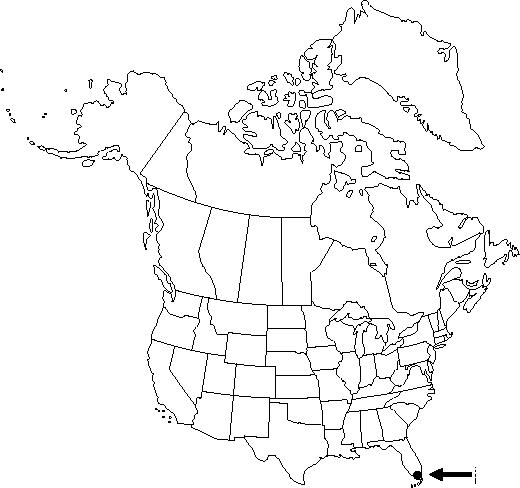Thelypteris patens var. patens
Stems erect, 4–12 mm diam. Leaves monomorphic, evergreen, clustered, (15–) 75–125 (–200) cm. Petiole (5–) 15–50 (–100) cm × (1–) 2–9 (–12) mm, at base with tan (whitish when young), ovate, glabrous scales. Blade (8–) 25–75 (–100) cm, broadest at or near base, tapering gradually to pinnatifid apex. Pinnae (3–) 10–32 × (0.5–) 1–3 (–4) cm, incised 3/4 or more of width; segments oblique, somewhat curved, basal segments elongate parallel to rachises or acroscopic segment of a pinna enlarged and dentate; proximal pair of veins from adjacent segments running to sinus or meeting margin just above sinus. Indument abaxially of hairs 0.2–0.8 mm and stalked glands 0.1 mm on costae, veins, and sometimes blade tissue; veins and costules adaxially glabrous, lacking glands. Sori round, medial to supramedial; indusia tan, usually hairy; sporangia glabrous or with stalked pear-shaped glands borne on sporangial stalks. 2n = 144.
Habitat: In limestone crevices in hammocks
Elevation: 0–50 m
Distribution

Fla., s Mexico, West Indies in the Antilles, Central America, South America to s Brazil, nw Argentina.
Discussion
Thelypteris patens var. patens is known in the flora from one collection made in 1905 from Dade County, Florida.
Selected References
None.